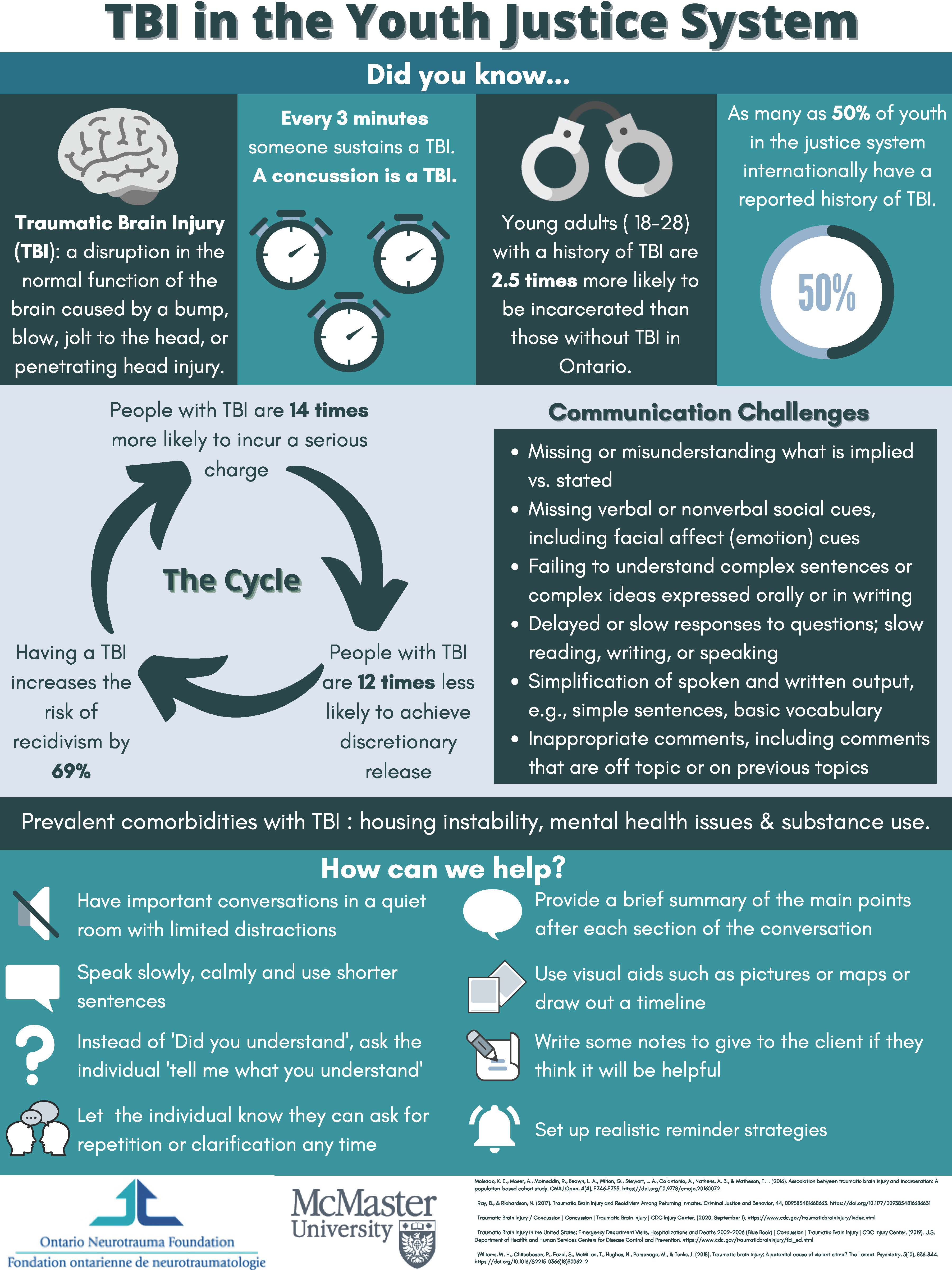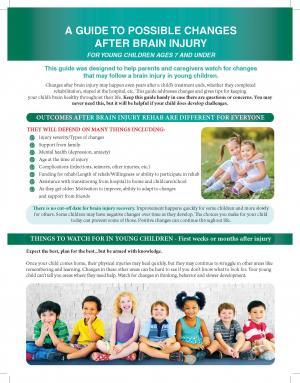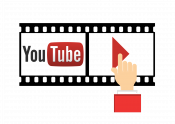![]() Symptom Tracker: Track Symptoms, pain level changes, what provokes and what helps. Good information to take back to the healthcare provider.
Symptom Tracker: Track Symptoms, pain level changes, what provokes and what helps. Good information to take back to the healthcare provider.
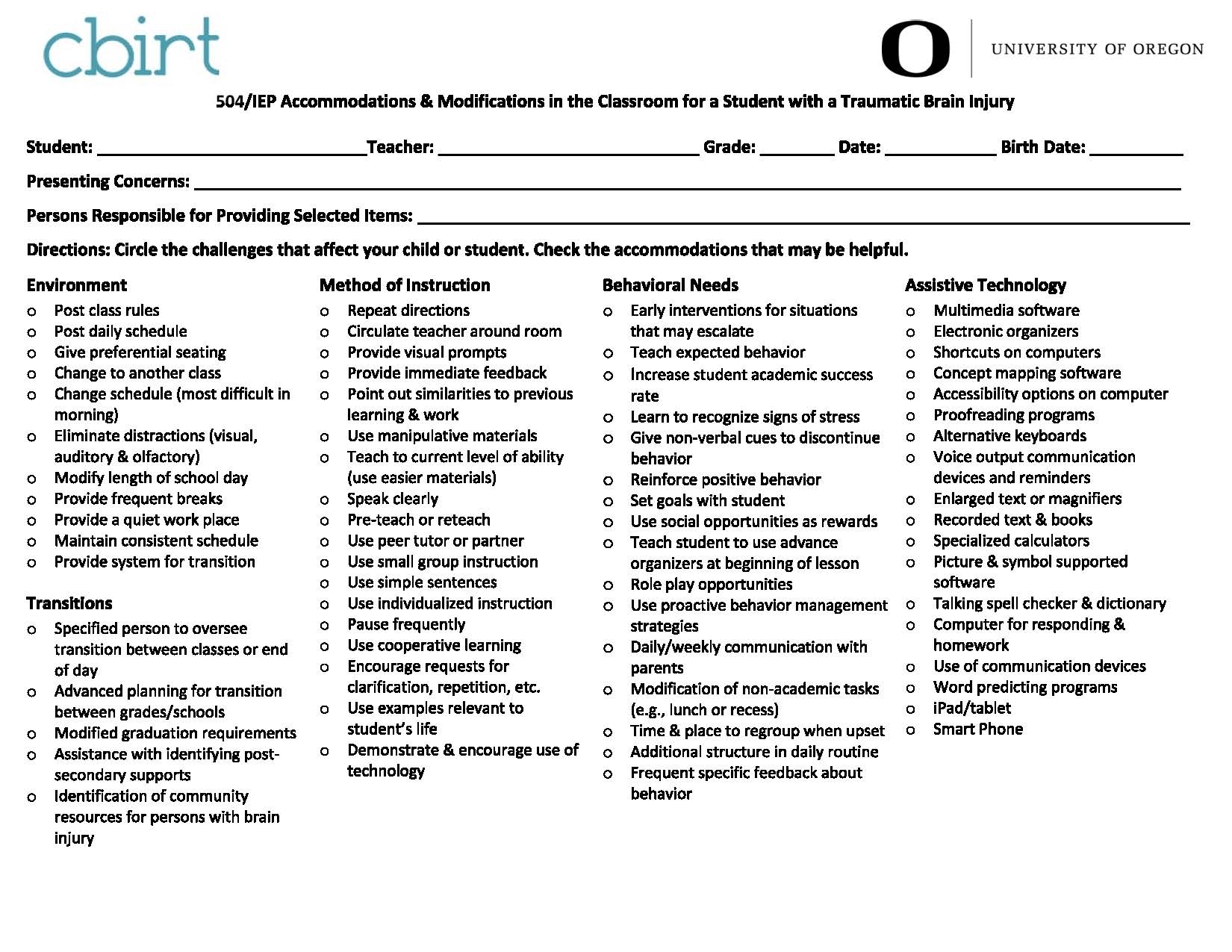 504/IEP Accommodations & Modifications in the Classroom for a Student with a TBI: Each section is broken down into helpful categories - developed by the Center on Brain Injury Research & Training (CBIRT).
504/IEP Accommodations & Modifications in the Classroom for a Student with a TBI: Each section is broken down into helpful categories - developed by the Center on Brain Injury Research & Training (CBIRT).
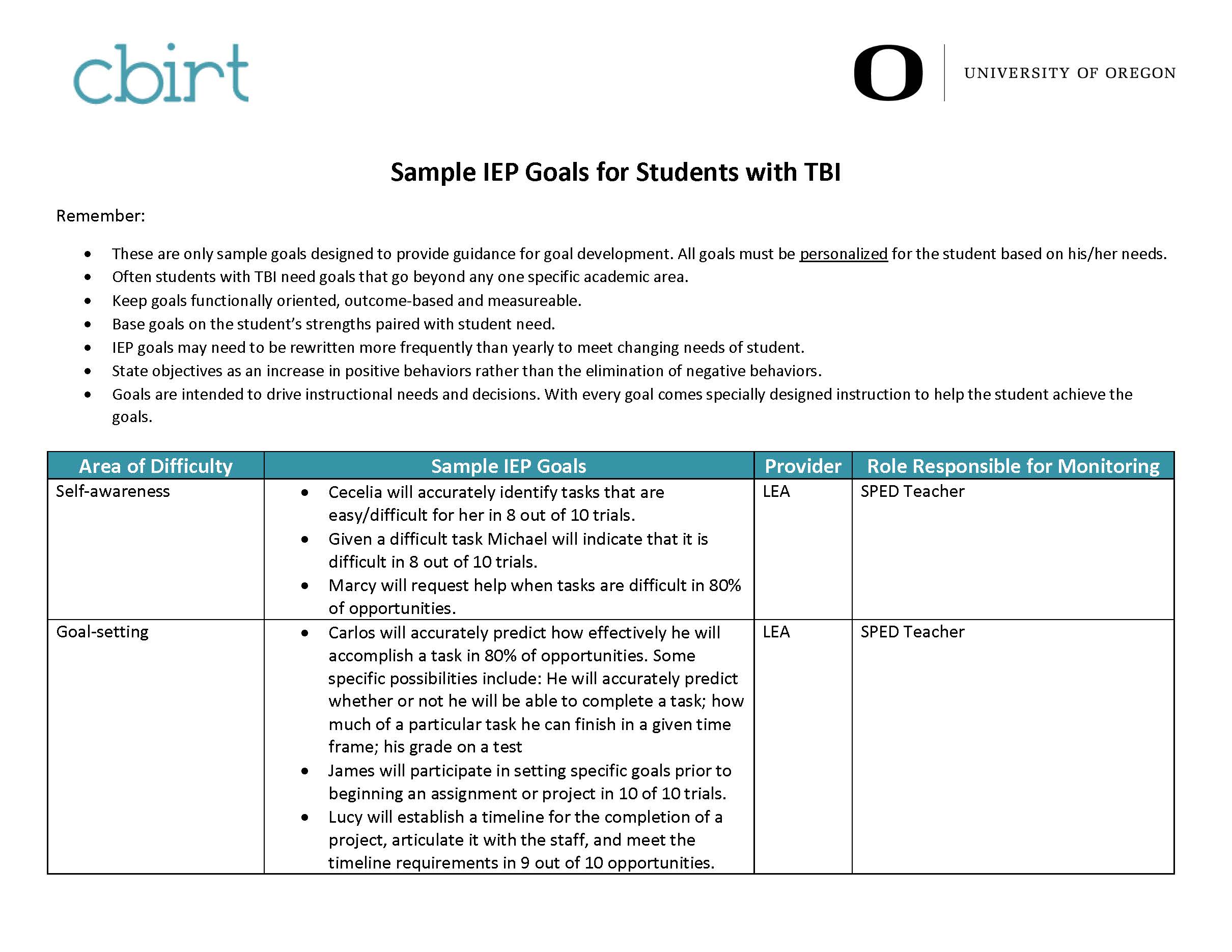 Sample IEP Goals for Students with TBI - (CBIRT).
Sample IEP Goals for Students with TBI - (CBIRT).
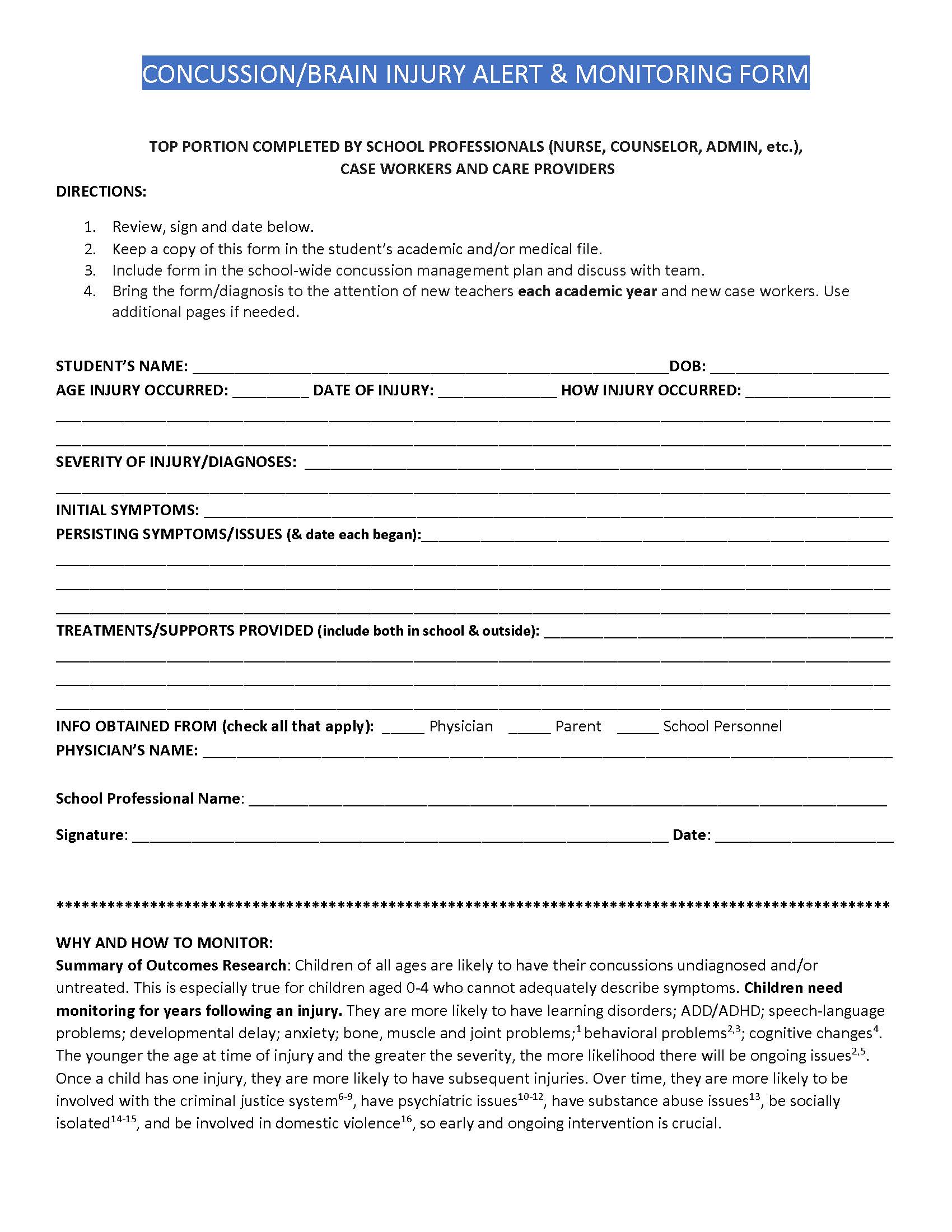 Concussion-Brain Injury Alert & Monitoring Form : For use in academic, school nurse or case manager file to serve as a reminder of the TBI. Also alerts others who may start working with the child. This can be filled out and given to the school to place in their academic and/or medical folder.
Concussion-Brain Injury Alert & Monitoring Form : For use in academic, school nurse or case manager file to serve as a reminder of the TBI. Also alerts others who may start working with the child. This can be filled out and given to the school to place in their academic and/or medical folder.
When Concussion Symptoms Are Not Going Away: Signs, symptoms and danger signs, plus what to look for over time and where/how to seek help for symptoms that aren't going away. Contact us for more information: tbi@tndisability.org
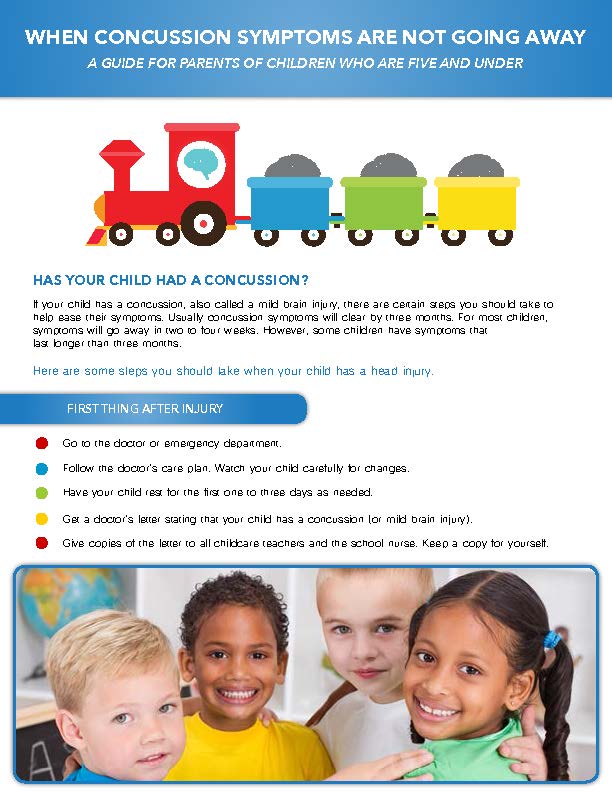 For Parents of Children Five and Under. English and in Español.
For Parents of Children Five and Under. English and in Español.
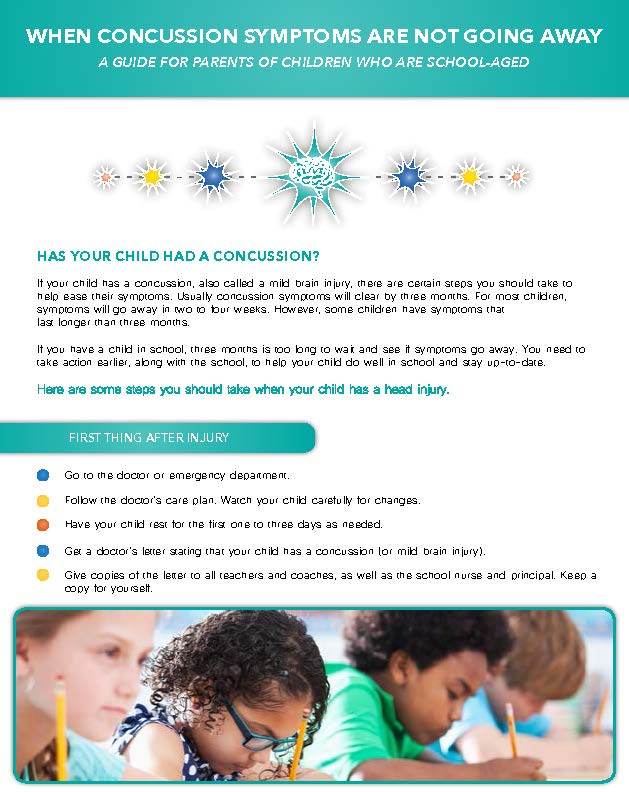 For Parents of School-Aged Children. English and in Español.
For Parents of School-Aged Children. English and in Español.
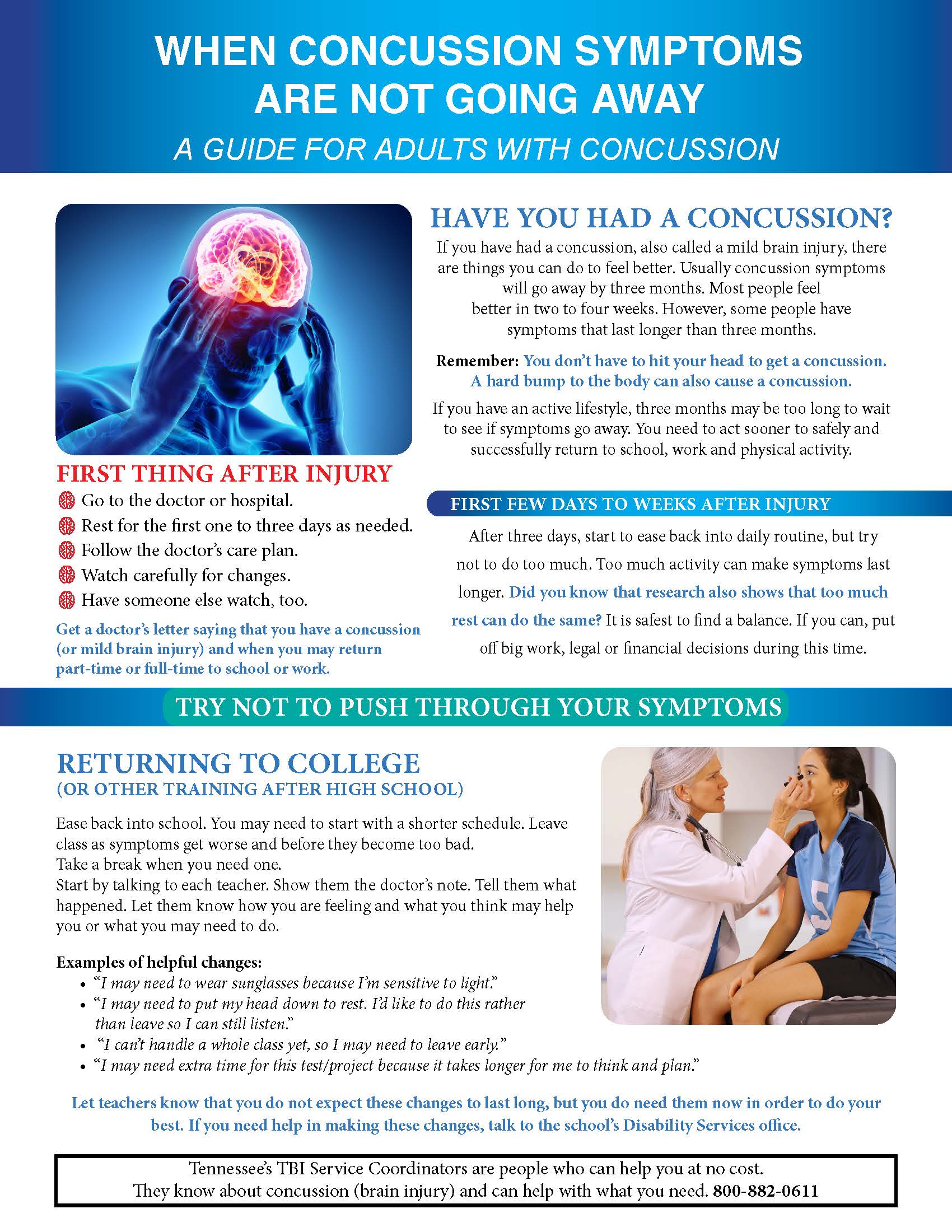 For Adults. English and in Español.
For Adults. English and in Español.
Pediatric Neuropsychology: A Guide for Parents
Clinical Neuropsychology: A Guide for Patients and Their Families
Six Types of Concussion Infographic & Fact Sheet: Brain Links developed a useful summary for the back of an easy to understand infographic created by ReThink Concussions at the University of Pittsburgh Medical Center.
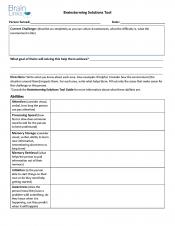 Brainstorming Solutions Tool: Helpful template for gathering information on person's skills and challenges to facilitate development of solutions. Great for direct service providers, students and new hires.
Brainstorming Solutions Tool: Helpful template for gathering information on person's skills and challenges to facilitate development of solutions. Great for direct service providers, students and new hires.
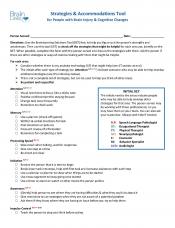 Strategies & Accommodations Tool: Use the Brainstorming Solutions Tool (BST) first, to help you figure out the person’s strengths and weaknesses. Then use this tool (SAT) to check off the strategies that might be helpful for each area you identify on the BST. When possible, complete this form with the person served and discuss the strategies with them. Ask the person if there are other strategies or ways of communicating with them that might be helpful.
Strategies & Accommodations Tool: Use the Brainstorming Solutions Tool (BST) first, to help you figure out the person’s strengths and weaknesses. Then use this tool (SAT) to check off the strategies that might be helpful for each area you identify on the BST. When possible, complete this form with the person served and discuss the strategies with them. Ask the person if there are other strategies or ways of communicating with them that might be helpful.

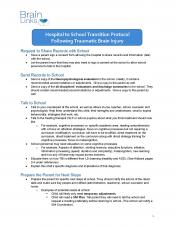 Hospital to School Transition Protocol: Helps rehabilitation units better understand the schools' processes, what they need and how to best facilitate transition back to school.
Hospital to School Transition Protocol: Helps rehabilitation units better understand the schools' processes, what they need and how to best facilitate transition back to school.
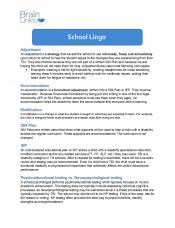 School Lingo: This is a companion document with the Hospital to School Transition Protocol.
School Lingo: This is a companion document with the Hospital to School Transition Protocol.
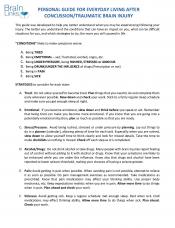 Personal Guide to Everyday Living After a Concussion, English and in Español.
Personal Guide to Everyday Living After a Concussion, English and in Español.
A Guide To Possible Changes After Brain Injury: For Young Children Ages 7 and Under. This guide was designed to help parents and caregivers watch for changes that may follow a brain injury in young children. Changes after brain injury may happen even years after a child’s treatment ends, whether they completed rehabilitation, stayed at the hospital, etc. This guide addresses changes and gives tips for keeping your child’s brain healthy throughout their life. Keep this guide handy in case there are questions or concerns. You may never need this, but it will be helpful if your child does develop challenges. PDF in English.
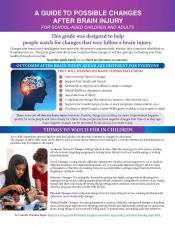 A Guide to Possible Changes After Brain Injury. By design, the Guide is best when distributed by rehabilitation personnel in inpatient and outpatient therapy programs and by medical personnel in trauma units, pediatrician’s offices, family practices, neurology offices, surgical offices, and other specialty offices. It is meant to be given to anyone who has sustained a diagnosed brain injury, as well as anyone who sustained a significant trauma where they may experience brain injury symptoms and downstream consequences; even if they do not show early symptoms or early symptoms seem to have cleared. English and in Español.
A Guide to Possible Changes After Brain Injury. By design, the Guide is best when distributed by rehabilitation personnel in inpatient and outpatient therapy programs and by medical personnel in trauma units, pediatrician’s offices, family practices, neurology offices, surgical offices, and other specialty offices. It is meant to be given to anyone who has sustained a diagnosed brain injury, as well as anyone who sustained a significant trauma where they may experience brain injury symptoms and downstream consequences; even if they do not show early symptoms or early symptoms seem to have cleared. English and in Español.

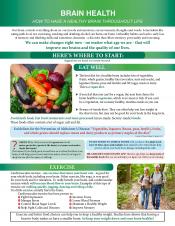 Brain Health: How to Have a Healthy Brain Throughout Life: By design provides research-based tips for creating a healthy brain, regardless of age. This guide was originally developed to help people with brain injuries recover to the fullest extent possible and to help them prevent or minimize potential negative changes as they age. However, it was quickly realized that the information in Brain Health is beneficial for everyone. English and in Español.
Brain Health: How to Have a Healthy Brain Throughout Life: By design provides research-based tips for creating a healthy brain, regardless of age. This guide was originally developed to help people with brain injuries recover to the fullest extent possible and to help them prevent or minimize potential negative changes as they age. However, it was quickly realized that the information in Brain Health is beneficial for everyone. English and in Español.
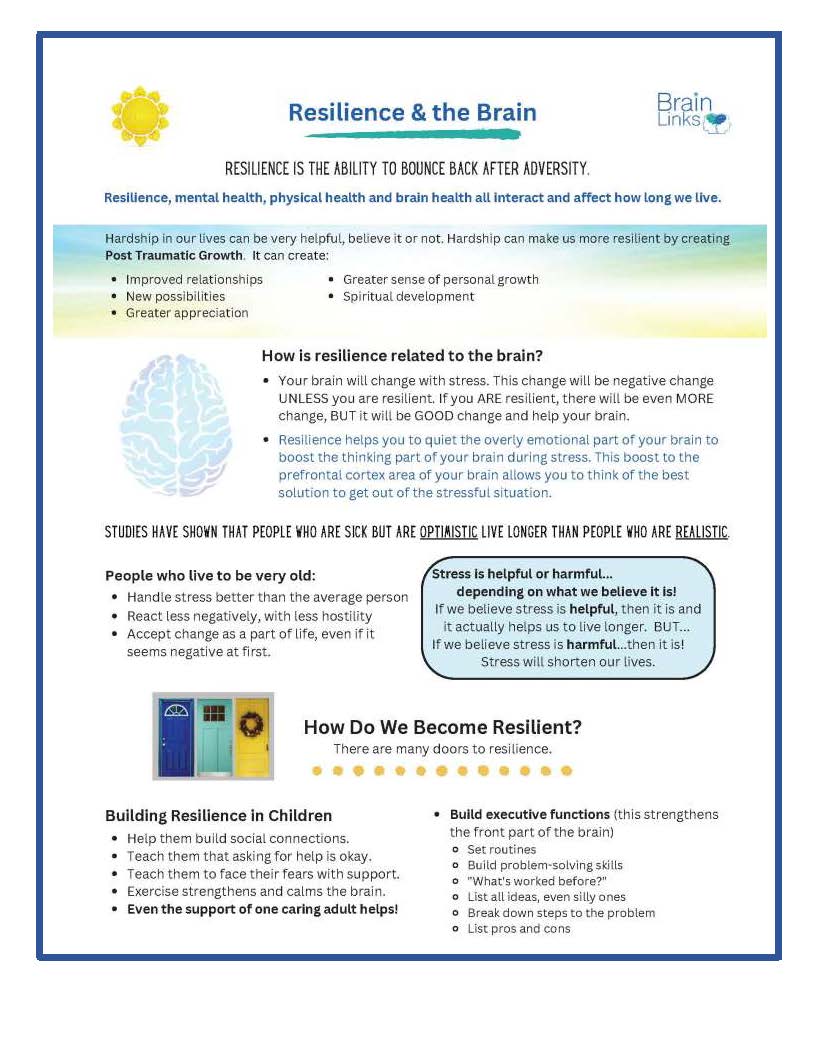 Resilience and the Brain: This material is great for people of all ages who are looking to learn more about resilience, helping themselves and/or others. Building resilience supports brain health, mental health, physical health and ultimately longevity. English Text Document.
Resilience and the Brain: This material is great for people of all ages who are looking to learn more about resilience, helping themselves and/or others. Building resilience supports brain health, mental health, physical health and ultimately longevity. English Text Document.
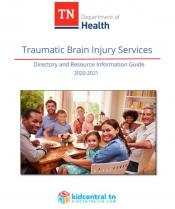 TN TBI Services Directory & Resource Information Guide: The Tennessee Department of Health Traumatic Brain Injury Service Directory and Resource Information Guide was designed to assist in locating programs, organizations, agencies, and services available across the state of Tennessee and the nation.
TN TBI Services Directory & Resource Information Guide: The Tennessee Department of Health Traumatic Brain Injury Service Directory and Resource Information Guide was designed to assist in locating programs, organizations, agencies, and services available across the state of Tennessee and the nation.
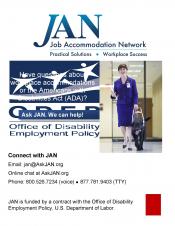 Job Accommodations Network: a publication detailing accommodations for individuals with limitations related to executive functioning. These ideas may be helpful in determining accommodations.
Job Accommodations Network: a publication detailing accommodations for individuals with limitations related to executive functioning. These ideas may be helpful in determining accommodations.
Brain Links YouTube Training Channel

 University of Alabama at Birmingham TBI Model Systems (UAB TBIMS) Rehab Tip Sheets: These tip sheets offer rehabilitation care providers and consumer caregivers step-by-step instructions and photo illustration on performing common activities. All Tip Sheets are free to print and disseminate for educational purposes.
University of Alabama at Birmingham TBI Model Systems (UAB TBIMS) Rehab Tip Sheets: These tip sheets offer rehabilitation care providers and consumer caregivers step-by-step instructions and photo illustration on performing common activities. All Tip Sheets are free to print and disseminate for educational purposes.
- Wheelchair Positioning (PDF)
- Assisted Pressure Relief (PDF)
- Lift Transfers of Patients (PDF)
- Assisted Transfers of Patients (PDF)
- Swallowing Strategies (PDF)
- Walking following Brain Injury (PDF)
- Managing Irritability and Temper Following Brain Injury (PDF)
- Resting Hand Splint Application (PDF)
- Bed Positioning for the Immobile Patients (PDF)
